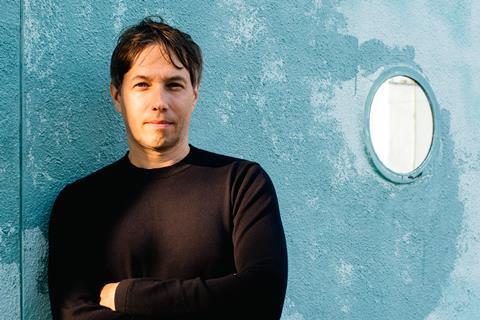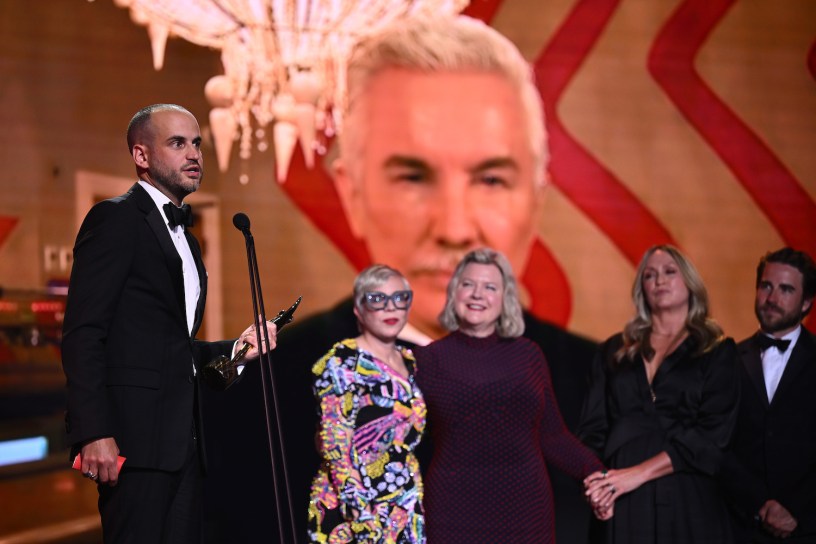By Tim Dams and Rebecca Leffler Screen Daily 29 March 2025

Source: Series Mania / J Lelong
Series Mania
There are few better places than Series Mania’s industry Forum to gauge the mood of the scripted TV industry. For three concentrated days this week, execs from the international TV business gathered in Lille to talk business, scout for shows and to swap ideas.
Screen distills the key conversation points from the 2025 edition.
Stability returns – but the market has shrunk
Peak TV is very much over: globally, scripted TV orders are running about 25% below the peak TV era, Ampere Analysis said in a Series Mania presentation. But there is a newfound stability in the series market, which has levelled out after the crash caused by the 2023 writers and actors strikes, the streamer focus on profitability and the slump in the commercial TV ad market. Striking a positive note, Ampere’s executive director Guy Bisson said: “The good news is that stability is predictable, and that is good for business.” Banijay’s head of scripted, business, Johannes Jensen also told Screen that the market has stabilised compared to last year. It might be challenging to finance shows, Jensen said, “but there is a big demand, especially here in Europe, for scripted. We’re not going further down.” ITV Studios president of global partnerships Ruth Berry echoed this in a keynote address. After a “perfect storm of macroeconomic challenges”, she said it feels like “there’s more buoyancy in the market.”
Time to collaborate
Given the challenging market conditions, producers and broadcasters are increasingly looking to collaborate. Co-production was the big talking point of Series Mania. The contraction has forced greater entrepreneurialism, said Banijay’s head of scripted, creative, Steve Matthews. “I’m certainly seeing more openness to cleverer ways of financing.” In the UK, many scripted series – even those greenlit by broadcasters such as the BBC – remain on hiatus as producers attempt to fill deficits. In part, this is because the UK’s traditional co-production partners in the US have retreated amid the challenges facing the network and cable businesses in the States. “The US are not co-producing – they are standing by,” one exec told Screen. As a result, the UK is increasingly looking to Europe to plug financing gaps. (However, several European execs said that the expectations of UK producers can be “unrealistic”.) Notably, the BBC and German broadcaster ZDF announced a scripted co-commissioning partnership at Series Mania.
European confidence
European broadcasters, of course, have long collaborated on scripted production. For example, Series Mania competition title Kabul, which has a budget of €20m, is backed by Euro broadcaster commissioning initiatives The European Alliance (comprising Germany’s ZDF, France Télévisions and Italy’s Rai) and New8 (which includes five Nordic broadcasters as well as ZDF, the Netherlands’ NPO and Belgium’s VRT). Perhaps because they have collaborated for many years out of necessity, the Europeans seemed to be the most upbeat contingent at Series Mania. By comparison, one felt the US and UK industries are finding it harder to adjust to the new market reality. France’s culture minister Rachida Dati called for “a European leap forward for culture” during a speech and stressed the strategic importance of European productions in the current international context. “When it comes to series, the United States were pioneers and have long dominated our screens. But today, and for quite some time now, Europe has been back in the game!” She cited series like festival closer HIP, which has traveled to some 100 countries including a US remake on ABC, The Bureau and Kabul. She added: “We create European gems by joining forces. […] I’m convinced that now is the time for a great European cultural awakening. We hold all the cards.”
The elephant in the room
President Donald Trump might have upended transatlantic alliances since taking office, but there was a curious lack of public debate at Series Mania about his policies and actions. Several French execs told Screen that last week’s news about a French scientist being denied entry into the United States, apparently because the scientist had expressed a personal opinion on the Trump administration’s research policy, was one of the causes for stymying debate. One told Screen: “One subject that is missing in the conference is whether collaboration with the US will change given the new political landscape… but we’re all scared to have our visa refused because of what happened to that French scientist at the airport.” The lack of political discussion was despite geopolitically-charged series powering the line-ups at both the festival and market including Kabul about the US and European withdrawal from Afghanistan, The Deal about US-Iran nuclear talks, Mussolini: Son Of The Century about the rise of fascism, and State Of Alert, TF1’s France-Israel espionage thriller.
The cinema-to-series crossover
The crossover between the film and TV worlds was evident throughout Series Mania. At the Forum, the winner of the first annual Buyer’s Choice award, The Deal, was created by Swiss filmmaker Jean-Stéphane Bron and French auteur Alice Wincour, known for Paris Memories and the upcoming Couture starring Angelina Jolie, with Gaumont and Anatomy of A Fall’s Les Films Pelleas among the co-producers. Kabul, also in competition, is co-produced by Mediawan’s 24 25 Films which comes from the world of feature films. One of France’s top film producers Charles Gillibert’s CG Cinema, which is behind upcoming features including Jim Jarmusch’s Father Mother Sister Brother and Couture, pitched series Kitchen Hustle at Coming Next from France. On the festival side, Cha Cha Real Smooth filmmaker Cooper Raiff brought his indie series Hal & Harper, Amanda Seyfried was in town for Long Bright River, Joe Wright was in competition with his Mussolini: Son Of The Century series, and Netflix brought family comedy Asterix And Obelisk: The Big Fight with producer Alain Goldman and creator-writer-director Alain Chabat with a cast that mirrors a Cannes film festival red carpet including Gilles Lellouche, Anais Demoustier, Geraldine Nakache, Thierry Lhermitte, Jeanne Balibar and more.
Crime rules
The demand for crime dramas remains as strong as ever. Some 31% of European scripted commissions are in the crime or thriller genre, according to Ampere research. The streamers like crime even more: almost half of their European original commissions are crime. As they embrace advertising and become more like commercial broadcasters, the streamers need audiences to return again and again – hence their keen interest in crime procedurals. Having gone off the boil, comedy is making a return too, representing 20% of scripted commissions. But the more expensive genres such as sci-fi and fantasy are lagging behind. Ampere also said that streamers are moving away from commissioning kids originals, preferring to licence instead. Recognisable IP and/or highly regarded talent are also important for commissions. Drama Republic co-chief exec Roanna Benn said forthcoming BBC1 drama Riot Women – about five women who form a makeshift punk-rock band – would have struggled to sell in today’s drama landscape if it didn’t have Sally Wainwright (Happy Valley) on board as the writer. “There are no dead bodies in the show, and that makes it harder these days,” she said.
Public service mainstays
The streamers might have returned to growth, but the public service broadcasters remain key to scripted producers. European Audiovisual Observatory research unveiled at Series Mania revealed that over half of fiction titles produced in Europe in 2023 were commissioned by public service broadcasters (55%), followed by private broadcasters (31%) and global streamers (14%). The challenge is that spend by broadcasting groups is stable, meaning it is decreasing in real terms. After a period of retrenchment, one senses that the spring is returning to the step of the streamers. Both Netflix and Amazon used their presentations to emphasise that they are commissioning in Europe. Politically they need to be seen working with European creators, particularly when European audiovisual financial obligations are being implemented in more countries. Nicole Morganti, Prime Video’s head of originals for Southern Europe, said that its upcoming Italian original Costiera had a US director in Adam Bernstein and a US lead, but it was a “true Italian story, written by Italian writers,” featuring an international cast from France, Spain and the UK, an Italian co-producer in Lux Vide and where “the Amalfi Coast is a protagonist.”
“Indie TV” struggles to take shape
As European co-productions with bolstered budgets and built-in broadcasters multiply, streamers produce content in-house and major groups like Mediawan, Banijay and Beta arrive with fully financed and talent-driven packages in tow, the market leaves little room for smaller, independent productions. While festival founder Laurence Herzsberg told Screen that “we are seeing more and more independent series not financed by traditional studios”, such projects are struggling to stand out. Cooper Raiff’s Hal & Harper, bowing in competition at the festival, was a six-year labour of love for the filmmaker self-financed by his Small Ideas production company. After premiering in Sundance, the series has signed a soon-to-be-announced US distributor, but the deal has been months in the making.
Series Mania matures
Now in its tenth year, Series Mania has been well and truly embraced by the scripted TV market as a co-production forum. Despite peak TV being over, attendees to its industry-focused Forum were at a record high. If anything, Series Mania has been bolstered by the demise of MipTV in Cannes, and doesn’t seem to have been affected by the growth of February’s London TV Screenings and the launch of MipLondon. There were plenty of big international delegations at the Forum. The newly launched Buyers Upfront was praised by many for the quality of its line-up, and attracted more than 100 international acquisitions execs from companies Apple TV+, Max, NBCUniversal, Canal+ and Channel 4. Likewise, delegates were impressed by the Series Mania Forum’s flagship Co-Pro Pitching Sessions, which saw the romantic comedy Tokyo Crush win the best project award. The conference sessions were well attended. But they tended to be slick and stage-managed (Netfix had masked pink guards from Squid Game marching on to the stage) rather than revealing or newsworthy.







